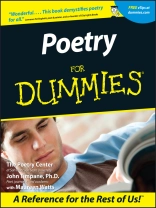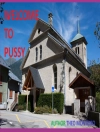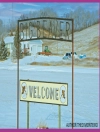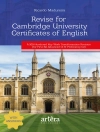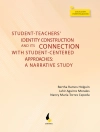Demystify and appreciate the pleasures of poetry
Sometimes it seems like there are as many definitions of poetry as there are poems. Coleridge defined poetry as “the best words in the best order.” St. Augustine called it “the Devil’s wine.” For Shelley, poetry was “the record of the best and happiest moments of the happiest and best minds.” But no matter how you define it, poetry has exercised a hold upon the hearts and minds of people for more than five millennia. That’s because for the attentive reader, poetry has the power to send chills shooting down the spine and lightning bolts flashing in the brain — to throw open the doors of perception and hone our sensibilities to a scalpel’s edge.
Poetry For Dummies is a great guide to reading and writing poems, not only for beginners, but for anyone interested in verse. From Homer to Basho, Chaucer to Rumi, Shelley to Ginsberg, it introduces you to poetry’s greatest practitioners. It arms you with the tools you need to understand and appreciate poetry in all its forms, and to explore your own talent as a poet. Discover how to:
- Understand poetic language and forms
- Interpret poems
- Get a handle on poetry through the ages
- Find poetry readings near you
- Write your own poems
- Shop your work around to publishers
Don’t know the difference between an iamb and a trochee? Worry not, this friendly guide demystifies the jargon, and it covers a lot more ground besides, including:
- Understanding subject, tone, narrative; and poetic language
- Mastering the three steps to interpretation
- Facing the challenges of older poetry
- Exploring 5, 000 years of verse, from Mesopotamia to the global village
- Writing open-form poetry
- Working with traditional forms of verse
- Writing exercises for aspiring poets
- Getting published
From Sappho to Clark Coolidge, and just about everyone in between, Poetry For Dummies puts you in touch with the greats of modern and ancient poetry. Need guidance on composing a ghazal, a tanka, a sestina, or a psalm? This is the book for you.
Inhoudsopgave
Introduction 1
Part I: Reading and Understanding Poetry 7
Chapter 1: Poetry 101 9
Chapter 2: Subject, Tone, and Narrative 31
Chapter 3: Tuning In to Language 41
Chapter 4: The Art of Interpretation 61
Chapter 5: Connecting with Poems from the Past 79
Part II: In the Beginning Was a Poem 91
Chapter 6: An Intelligent Hustle through Poetic History: From the Earliest Poetry to the 1700s 93
Chapter 7: An Intelligent Hustle through Poetic History: The 19th Century to the Present 113
Part III: Writing Poetry: A Guide for Aspiring Poets 139
Chapter 8: Calling the Muse 141
Chapter 9: Writing Open-Form Poetry 157
Chapter 10: Working with Traditional Forms of Verse 169
Chapter 11: Putting Pen to Paper: Writing Exercises for Poets 177
Chapter 12: Going Public with Your Poetry 187
Chapter 13: Getting Published 199
Part IV: The Part of Tens 213
Chapter 14: Ten Myths about Poets and Poetry 215
Chapter 15: Ten Poems Worth Memorizing 225
Chapter 16: Ten Love Poems 233
Part V: Appendixes 241
Appendix A: Glossary 243
Appendix B: Poetry Timeline 255
Appendix C: Resources 273
Permissions 287
Index 295
Over de auteur
The Poetry Center in San Francisco sponsors readings and awards and houses a renowned poetry archive. John Timpane, Ph.D., is the author of It Could Be Verse: Anybody’s Guide to Poetry. Maureen Watts is a writer and longtime poetry activist who serves on the board of the National Poetry Association
